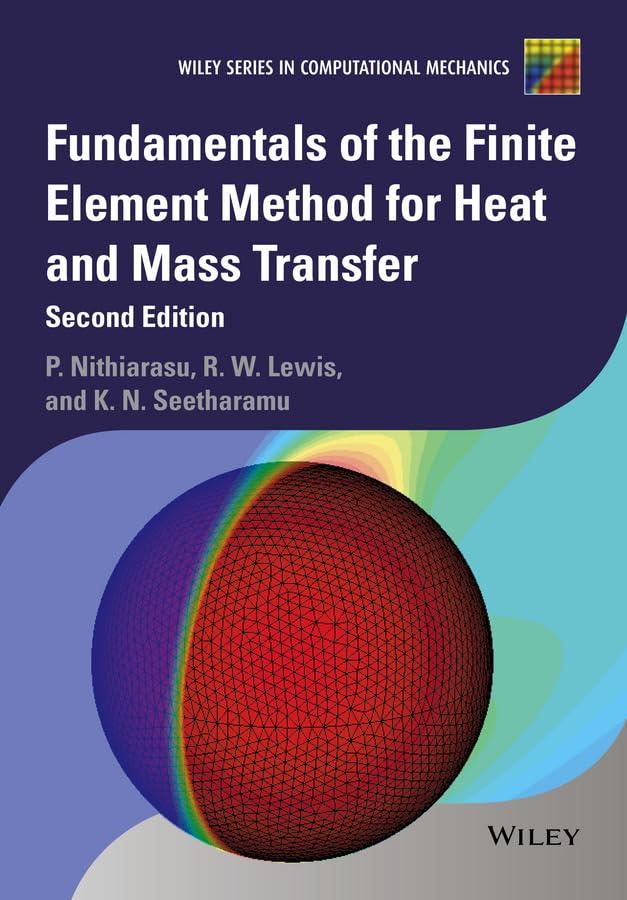In a double pipe heat exchanger, hot fluid flows inside a pipe and cold fluid flows outside
Question:
In a double pipe heat exchanger, hot fluid flows inside a pipe and cold fluid flows outside in the annular space. The heat exchange between the two fluids is given by the differential equations, (refer to Exercise 2.5.12)
Data From Exercise 2.5.12
Exercise 2.5.12 The details of a double pipe heat exchanger are given as:
(a) cold fluid heat capacity rate \(C_{1}=1100 \mathrm{~W} /{ }^{\circ} \mathrm{C}\);
(b) Hot fluid heat capacity rate \(C_{2}=734 \mathrm{~W} /{ }^{\circ} \mathrm{C}\);
(c) overall heat transfer coefficient \(U=600 \mathrm{~W} / \mathrm{m}^{2 \circ} \mathrm{C}(d)\) heat exchanger area \(A=4 \mathrm{~m}^{2}\)
(e) cold fluid entry temperature \(T_{c i}=20^{\circ} \mathrm{C}(f)\) hot fluid entry temperature \(T_{h i}=80^{\circ} \mathrm{C}\). Set up the stiffness matrix and them solve for the outlet temperature and the effectiveness of the heat exchanger by using 1 element, 2 elements and 4 elements for the heat exchanger. Also determine the minimum number of elements required for converged solution (refer to Chapter 9).
\[ \begin{align*} C_{1} \frac{d T_{h}}{d A} & =-U\left(T_{h}-T_{c}\right) \\ C_{2} \frac{D T_{c}}{d A} & =U\left(T_{h}-T_{c}\right) \tag{3.303} \end{align*} \]
Develop the stiffness matrix and forcing vector using
(a) subdomain method
(b) Galerkin method.
Step by Step Answer:

Fundamentals Of The Finite Element Method For Heat And Mass Transfer Wiley Series In Computational Mechanics
ISBN: 272391
2nd Edition
Authors: P. Nithiarasu, R. W. Lewis, K. N. Seetharamu





